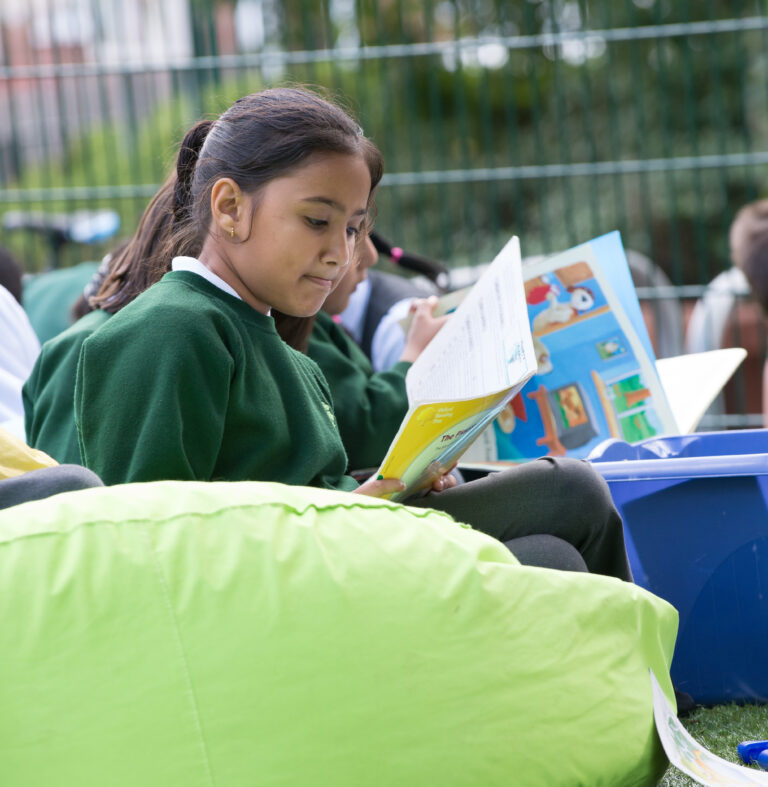7 strategies to keep your secondary school library organised and engaging
For secondary school librarians, the back-to-school period is often a busy time. With students returning books, seeking study materials, and diving into the academic year, an organised library is essential for smooth operations across the rest of the school year.
In this blog, you’ll discover:
- 7 strategies to enhance your library’s organisation.
- how to create a more engaging environment for students.
- how to manage the back to school rush.
- how to create the library into a hub for personal and academic development.
Continue reading to learn how see you can maintain a well-organised secondary school library this academic year.

Your students have returned and the new academic year is in full swing. Here are our 7 strategies to enhance your secondary school library’s organisation at this busy period and create an engaging hub of activity and community of learners this new school year.
Optimise book sorting with Dewey and genre-driven displays
While the Dewey Decimal System is a staple in most secondary school libraries, complementing it with genre-driven displays can encourage wider reading. Set up displays that group books by genre, theme, or even current trends. For example, create a “binge-worthy series” section or a “book-to-film” display to capture the attention of teenagers.
Tip: Rotate genre displays regularly to keep the selection of books fresh and in tune with current student interests.


Make the most of library management software
If you’re already using a digital library management system like Reading Cloud, it’s worth exploring its full potential. Many systems can include features like book reviews, recommendations, or a “students also borrowed” section to help students discover new reads. Automated overdue reminders and reservation notifications can help students manage their borrowing more effectively, reducing the need for manual tracking.
Tip: Train staff and student library helpers to assist their peers with advanced search functions, like filtering by genre, author, or subject keywords.
Create interactive study zones and resource centres
With secondary school students having varied academic needs, creating specific zones for different types of study can be beneficial. Alongside quiet reading areas and group study spaces, consider setting up dedicated zones for academic resources. For example, establish a research centre with textbooks, scientific journals, and reliable web resources, or a language zone with multilingual books and online learning tools.
Tip: Equip these areas with digital tools like tablets or e-readers to give students access to online journals or ebooks.


Offer digital literacy workshops and information sessions
As students progress through secondary school, they increasingly rely on independent research. This is particularly important to develop critical thinking skills. Organising workshops on digital literacy, including how to use databases, evaluate online resources, and properly cite references, can provide valuable support. Tailor these workshops to align with key subjects, helping students use library resources more effectively.
Tip: Work with teachers to create subject-specific workshops, such as history, science, or media studies, to integrate library skills into coursework.
Feature student-generated content in displays
Engage students by incorporating their work into your library displays. Encourage them to submit book reviews, reading lists, or even short stories to be showcased. This can foster a sense of community and give students a sense of ownership over the library. You could also set up a “recommendation board” where students suggest books to their peers, making the library more interactive.
Tip: Run a competition for the best student book reviews, and feature the winning entries prominently in the library.


Establish peer-led student groups and book clubs
Encourage students to take initiative by forming their own study groups or book clubs. These peer-led groups not only foster a sense of community but also help students develop leadership and organisational skills. Study groups could focus on exam preparation, while book clubs might explore specific genres or dive into more challenging literature.
Tip: Use the school’s social media or school communication channels to promote these groups and increase student participation.
Strengthen your library’s digital presence
In today’s digital world, maintaining an online presence for your school library can make it more accessible. Consider creating a social media profile where you can share updates on new arrivals, upcoming events, or reading challenges. Or if you have Reading Cloud, use the customisable homepage to share updates. A digital book club or reading group could also allow students to engage with the library even when they’re not physically present.
Tip: A student-run social media page or blog can keep the content fresh and relatable for their peers.

Conclusion
Your secondary school library is a vital hub for both academic and personal development. By implementing these strategies, you can enhance its organisation, foster student engagement, and provide tailored academic support. A well-organised and dynamic library helps students not only manage their academic workload but also nurture a love for learning that lasts well beyond their school years.
Ready to transform your school library?
Don’t miss out on the opportunity to elevate your students’ library experience. If you’re not yet part of the Reading Cloud family, now is the perfect time to find out more about what we can offer your school. Book a no obligation demo with one of our expert Sales team today and discover how Reading Cloud can transform your school library.

